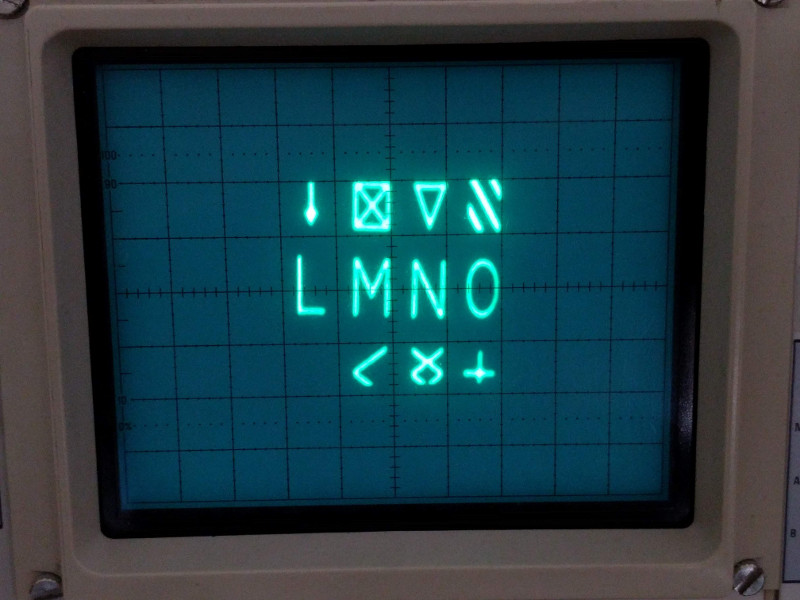There are many ways of storing data in a computer’s memory, and not all of them allow the computer to write to it. For older equipment, this was often a physical limitation to the hardware itself. It’s easier and cheaper for some memory to be read-only, but if you go back really far you reach a time before even ROMs were widespread. One fascinating memory scheme is this example using a vacuum tube that stores the characters needed for a display.
[eric] over at TubeTime recently came across a Raytheon monoscope from days of yore and started figuring out how it works. The device is essentially a character display in an oscilloscope-like CRT package, but the way that it displays the characters is an interesting walk through history. The monoscope has two circuits, one which selects the character and the other determines the position on the screen. Each circuit is fed a delightfully analog sine wave, which allows the device to create essentially a scanning pattern on the screen for refreshing the display.
[eric] goes into a lot of detail on how this c.1967 device works, and it’s interesting to see how engineers were able to get working memory with their relatively limited toolset. One of the nice things about working in the analog world, though, is that it’s relatively easy to figure out how things work and start using them for all kinds of other purposes, like old analog UHF TV tuners.
















Ive heard that military manufacturers such as Raytheon also like tubes because they are resistant to the effects of EMPs caused by nuclear blasts.
Possibly, but in this case it’s more “if all you have is…”.
MIG 25 designers were on the same page.
Like the Avro Arrow. Mach 1.9 fly-by-wire. Designed and built in Canada in the mid-fifties, they didn’t have much choice but to use vacuum-state technology though. Some tinfoil hatters say the Mig 25 was based on it. Others say the US made the Canadians scuttle it in ’59 because it was too good. But that’s OK, by gutting the Canadian aerospace industry, Diefenbaker and Eisenhower freed up its brilliant engineers to head south to put men in orbit and then on the moon.
Ha! Never heard about it, till now. Thanks for another wiki marathon ;)
It wasn’t that good of a plane – it was fast but otherwise poorly equipped. It was only really useful as a bomber interceptor at a time when bombers were becoming less relevant in the cold war.
Using the display for a “backing store” was one of the techniques Don Bitzer used for the Plasma Display Panel in 1964. The needed a display for the PLATO terminal that didn’t need to be refreshed but could stay charged until needing to be redrawn. It was much less expensive to do this with a Plasma Panel with a 512×512 addressable pixels. Which was cheaper than an equal amount of Magnetic core memory and that was PER display of a multi-user system (PLATO). https://en.wikipedia.org/wiki/Plasma_display
Omg